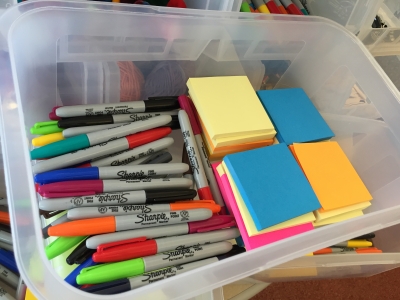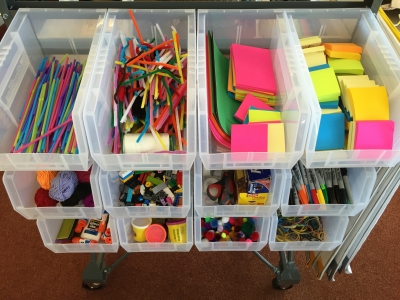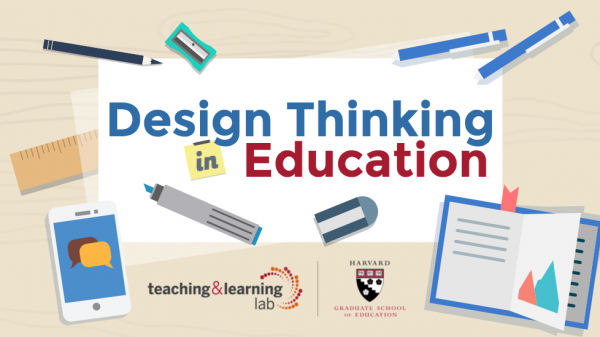Design Thinking is a mindset and approach to learning, collaboration, and problem solving. In practice, the design process is a structured framework for identifying challenges, gathering information, generating potential solutions, refining ideas, and testing solutions. Design Thinking can be flexibly implemented; serving equally well as a framework for a course design or a roadmap for an activity or group project.
Download the HGSE Design Thinking in Education infographic to learn more about what Design Thinking is and why it is powerful in the classroom.
 TLL Resources The Teaching and Learning Lab provides a variety of support for Design Thinking, including:
TLL Resources The Teaching and Learning Lab provides a variety of support for Design Thinking, including:
Design Consultation for projects, session, and courses, including active learning and facilitation strategies.
Brainstorming Kits including Post-it notes, Sharpie markers, and stickable chart paper.
Physical Prototyping Cart with dozens of creative, constructivist supplies, including felt, yarn, foil, craft sticks, rubber bands, Play-Doh, Legos, and more.
 Coming Soon! HGSE Design Thinking use cases, collated workbooks, and curated research.
Coming Soon! HGSE Design Thinking use cases, collated workbooks, and curated research.
For more information about TLL resources or to check-out brainstorming or prototyping materials, contact Brandon Pousley.
Other Resources There are dozens of ready-made activities, workbooks, and curricular guides available online. We suggest starting with the following:
Stanford — d.school and the The Bootcamp Bootleg
IDEO — 'Design Thinking for Educators' and the Design ThinkingToolkit
Business Innovation Factory — 'Teachers Design for Education' and the TD4Ed Curriculum
Research — Design Thinking in Pedagogy — Luka, Ineta (2014). Design Thinking in Pedagogy. Journal of Education Culture and Society, No. 2, 63-74.
